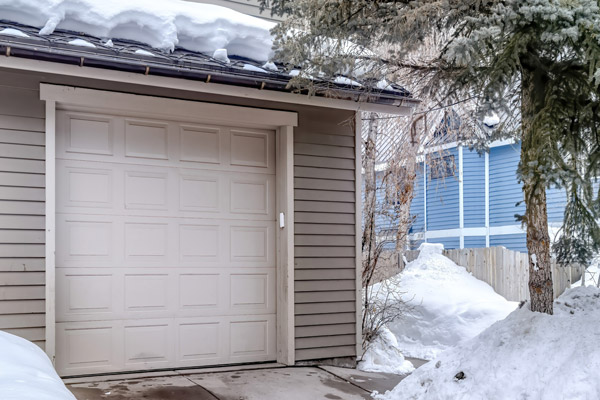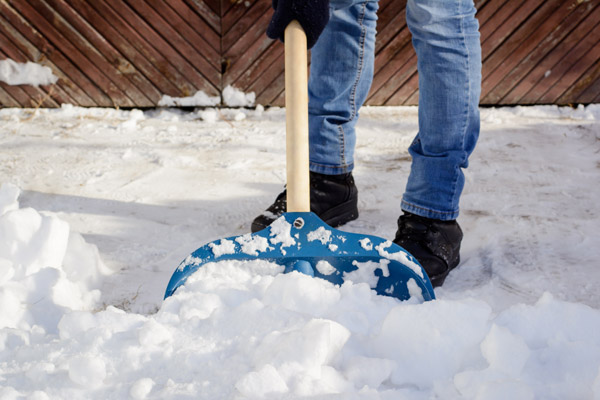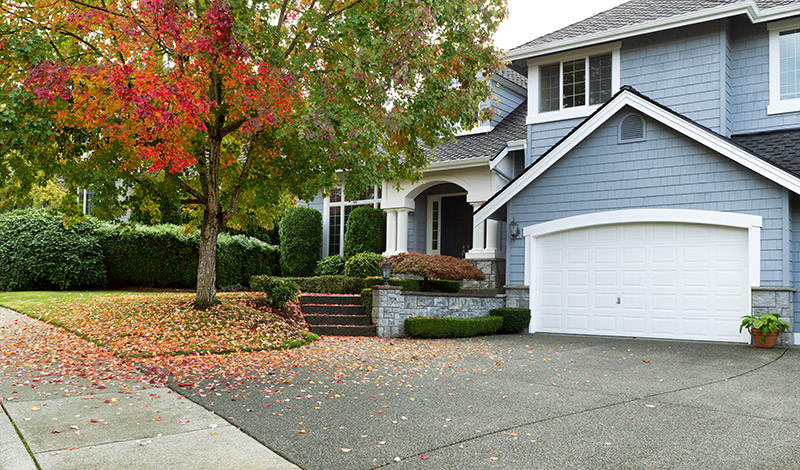5 Tips to Prevent Your Garage from Freezing Shut
Skiing in the Alps, ice skating on a frozen pond, and making snowmen in your yard are all excellent winter activities. However, we view winter less favorably when a storm arrives, and two feet of snow unexpectedly fall in front of your yard. Snow is frequently accompanied by wind and ice. The weather conditions and below-freezing temperatures can damage your garage door system.
Your garage door serves as an essential entrance and exit point to your residence. Therefore, it must operate throughout the year. This guideline is necessary if your garage door becomes stuck in the cold or if you want to avoid a frozen garage door. Find out more about how to prevent your garage from freezing shut.

Actions to Take If Your Garage Door is Frozen
You leave the house dressed and ready to go on a chilly morning. But as you attempt to depart, you discover that your garage door is stuck, and it does not move when you attempt to open it.
Only attempt to press the automatic opener button once again if your garage door is stuck.
If it’s chilly outside and your garage door won’t open, you should ensure it isn’t frozen to the ground. Take these actions if you detect ice accumulating under the weather seal.
Move the Ice Away
Go outside your garage, where you may grab an ice scraper. To avoid damaging the weatherstripping seal along the bottom, chip the ice away carefully. Then, sweep it away from the door after removing as much ice as possible.
Try to lift the door manually after clearing the space between it and the ground of the extra ice. If the door slides smoothly, don’t try to force it open. Instead, return and attempt to chisel away more ice or move on to the subsequent stage.
Use Heater to Melt the Ice
The remaining ice buildup locations should be targeted using a blow drier or heat gun set to a low temperature. If your garage has a heater, you can turn it on close to the door while keeping the heat low to aid in melting the ice. Once the ice has partially melted, you can attempt to chisel away the remaining chunks.
Make an effort to use only a little power during these steps. Turn off the automatic door opener and make an effort to raise the door manually. It will prevent overworking the opener system. To melt the ice, consider using hot water, but keep in mind that if temperatures are really low and you use a lot of water, it might lead to other ice formations.
Tips to Prevent Your Garage Door from Freezing
The hassle and time needed to open a stuck garage door can be avoided by taking preventative measures. Take the following actions to maintain the functionality of your garage if you anticipate cold weather and freezing conditions, especially if your garage door frequently freezes to the ground:
1. Prepare for the Cold Weather
Remove any ice, snow, and water from the floor, whether you have just unstuck your garage door or are checking it before the cold weather arrives. The sooner you address these issues, the simpler it will be to keep your door in good condition. As you sweep, shovel, or remove the ice and snow, keep the garage door open if it is functional.
Open the door and dry the area if it hasn’t yet gotten cold, but the garage floor is moist. If there are any puddles, use a wet vacuum or dry towels and mops to remove the water.
Maintaining a clear driveway is another aspect of clearing ice and snow. Snow near the garage door can wind up underneath it, and anyone driving or entering the garage may track snow in. That can eventually result in a garage door that is solidly closed.

2. Place a Heater in Your Garage
Placing a heater in your garage can prevent a frozen garage door. An adequately heated garage offers workable space throughout the year, even in below-zero storms. On the other hand, your automobile and any tools and equipment you store in your garage will suffer damage if it gets too chilly. Although more expensive, electric heaters are the simplest to install.
Gas units place a less financial strain on you, but installation is more challenging. This is because they need a gas supply and an exhaust vent. But both choices are efficient.
3. Apply Lubricant to Your Garage Door
Maintaining sufficient lubrication in your garage door system is crucial because it will help in chilly weather. You may purchase lubricants designed especially for garage door openers. In addition, your garage door’s rubber bottom seal will be less likely to stick to ice if you spray it with a lubricant, such as silicone spray.
Because of their waterproof qualities, lubricants lower the freezing point of water. Therefore, spraying it in the appropriate places can prevent freezing and keep your garage door from freezing. If you don’t have silicone spray, vegetable oil or cooking spray will yield the same results.
4. Use Sand or Salt on the Ground
To stop ice from ever forming, sprinkle salt where the garage door meets the ground. Avoid spreading too much sand or rock salt; a small sprinkle will do. Since salt also reduces water’s freezing point, doing this will make freezing more challenging.
When the weather starts warming up, clean the elements at the bottom edge of the garage door and sweep away any salt or sand that may have accumulated there. Doing this can prevent damaging your garage door while attempting to keep it from freezing to the ground.
5. Try to Manually Open and Close the Door Occasionally
You can prevent your garage door from freezing by moving it. Thin layers of ice that began accumulating can more easily break away as the garage door moves. This could prevent your garage door from freezing shut and make it easier to remove ice later.
It’s best to open and close the door if you can manually. If the door is stuck, you want to avoid taking the chance of breaking the opener system by opening it automatically. Instead, open your door by pulling the release rope when it is closed. By doing so, the opener is disengaged, allowing you to lift and close the garage door by hand. When finished, pull the rope toward the door to reactivate the opener.
Winterizing Your Garage Door is Essential
The winter weather will impact your garage door and other aspects of your garage. Your pipes could freeze due to the weather. Concrete flooring can become eroded by the snow, ice, and salt on your car. Your heater will have to work harder and use more energy, increasing your electricity costs if shared walls are poorly insulated. Additionally, by causing cracks and gaps, a bare floor can exacerbate insulation issues.
Winter’s impacts can reduce your garage door’s lifespan in addition to causing immediate annoyance. After a few winters, you might find that the door or its hardware has to be replaced. On the other hand, winterizing safeguards your investment and generates savings.
Preparing your garage for winter is critical to avoid getting stuck in an emergency with a stuck door. If your vehicle is caught inside due to a stuck door, you may find it difficult to escape. In addition, there won’t be anything to shield the outside of your vehicle from the elements if it is left outside.
Take some time to get your garage ready as winter arrives and the first snowfall approaches. You can complete certain jobs independently, but others might call for expert assistance. You’ll discover that even the smallest preventive maintenance actions significantly impact your garage door.
That’s why Danley’s Garages is #1 in Chicagoland for detached garage construction. Speak to a specialist and get a free quote today.





